Description
2-Fluoroamphetamine is a stimulant drug belonging to the amphetamine family. It is a designer drug that has been sold for its psychoactive effects. The compound is structurally similar to amphetamine, with the key difference being the substitution of a hydrogen atom with a fluorine atom at the second position on the aromatic ring. This modification increases the compound’s lipophilicity, facilitating its passage through the blood-brain barrier .
Preparation Methods
Synthetic Routes and Reaction Conditions: The synthesis of 2-Fluoroamphetamine typically involves the fluorination of amphetamine precursors. One common method is the direct fluorination of phenylpropanolamine using a fluorinating agent such as diethylaminosulfur trifluoride (DAST). The reaction is carried out under anhydrous conditions to prevent hydrolysis of the fluorinating agent.
Industrial Production Methods: Industrial production of this compound follows similar synthetic routes but on a larger scale. The process involves stringent control of reaction conditions to ensure high yield and purity. The use of automated reactors and continuous flow systems can enhance the efficiency and safety of the production process.
Chemical Reactions Analysis
Oxidation and Reduction Reactions
2-FA undergoes oxidation and reduction at its amine and aromatic groups:
Oxidation
- Primary amine oxidation : The amine group can be oxidized to form nitroso or nitro derivatives under strong oxidizing conditions (e.g., potassium permanganate) .
- Aromatic ring oxidation : Fluorine’s electron-withdrawing effect stabilizes the ring, but prolonged exposure to oxidizers may degrade the structure.
Reduction
- Nitro group reduction : During synthesis, nitro intermediates are reduced to amines using LiAlH₄ or catalytic hydrogenation .
Substitution Reactions
The fluorine atom at the 2-position participates in nucleophilic substitutions under specific conditions:
- Hydroxyl substitution : Fluorine can be displaced by hydroxyl groups in alkaline aqueous solutions, though this is kinetically slow due to fluorine’s strong C-F bond .
- Aromatic electrophilic substitution : The fluorine atom directs electrophiles to meta/para positions, but reactivity is limited compared to non-fluorinated amphetamines .
Metabolic Pathways
In vivo, 2-FA undergoes enzymatic transformations via:
- N-Hydroxylation :
2 FA→CYP450N hydroxy 2 FA
- Aliphatic Hydroxylation :
- Conjugation :
Stability and Degradation
2-FA is stable under dry, inert conditions but degrades in the presence of:
- Strong acids/bases : Hydrolysis of the amine group or defluorination.
- UV light : Photolytic cleavage of the C-F bond, generating reactive intermediates .
Comparative Reactivity
| Reaction Type | 2-FA | Amphetamine |
|---|---|---|
| Fluorination | High (direct DAST substitution) | Not applicable |
| Oxidation | Moderate (stable aromatic ring) | Higher (unfluorinated ring) |
| Metabolic Rate | Faster (lipophilic enhancement) | Slower |
Analytical Detection
- LC-MS/MS : Identifies metabolites like N-hydroxy-2-FA and β-hydroxy-2-FA in urine .
- FTIR/NMR : Detects structural changes during degradation or synthesis .
Scientific Research Applications
Introduction to 2-Fluoroamphetamine
This compound is a synthetic stimulant belonging to the amphetamine family, characterized by the presence of a fluorine atom at the second position of the aromatic ring. This modification enhances its lipophilicity, facilitating its passage through the blood-brain barrier, which is a critical factor for central nervous system activity. The compound has garnered attention both as a designer drug and for its potential applications in scientific research.
Comparative Studies
A comparative analysis with other halogenated amphetamines revealed that this compound has a stronger inhibition of dopamine uptake than serotonin uptake in rat brain synaptosomes. This selectivity is important for understanding its potential therapeutic applications and side effects .
| Compound | Dopamine Uptake Inhibition | Serotonin Uptake Inhibition |
|---|---|---|
| This compound | Strong | Moderate |
| p-Chloroamphetamine | Moderate | Strong |
| Amphetamine | High | Low |
Analytical Chemistry
This compound is increasingly utilized in forensic and analytical chemistry for the identification and quantification of designer drugs. Its metabolites can be detected in biological samples, making it a valuable compound for toxicological studies. Recent research has focused on developing analytical standards for its metabolites, enhancing detection methods in urine samples .
Neuropharmacology
In neuropharmacological research, this compound serves as a model compound to study the effects of amphetamines on neurotransmitter systems. Its ability to induce dopamine release makes it significant for exploring treatments for conditions such as Attention Deficit Hyperactivity Disorder (ADHD) and narcolepsy. However, ethical considerations regarding its use in human subjects necessitate further investigation into its safety profile and therapeutic window .
Toxicology Studies
Toxicological assessments have indicated that this compound has an LD50 of approximately 100 mg/kg in mice, suggesting a moderate level of toxicity compared to other stimulants. Understanding its toxicological profile is crucial for assessing risks associated with recreational use and potential therapeutic applications .
Case Study 1: Forensic Analysis
A notable case involved the identification of this compound in seized substances during drug enforcement operations. Forensic scientists employed gas chromatography-mass spectrometry (GC-MS) to confirm the presence of this compound among other synthetic stimulants, highlighting its relevance in contemporary drug abuse scenarios.
Case Study 2: Neuropharmacological Research
In a controlled study involving rats trained to discriminate between various stimulants, this compound was found to fully substitute for amphetamine cues, indicating its potential as a psychostimulant. This finding underscores the need for further exploration into its behavioral effects and mechanisms of action within dopaminergic pathways .
Mechanism of Action
2-Fluoroamphetamine exerts its effects primarily by inhibiting the reuptake of dopamine and norepinephrine, leading to increased levels of these neurotransmitters in the synaptic cleft. This results in heightened stimulation of the central nervous system. The compound does not significantly affect serotonin receptors, distinguishing it from other amphetamines that have empathogenic effects .
Comparison with Similar Compounds
- 3-Fluoroamphetamine
- 4-Fluoroamphetamine
- 2-Fluoromethamphetamine
Comparison: 2-Fluoroamphetamine is unique due to the position of the fluorine atom on the aromatic ring. This positional isomerism affects its pharmacological properties. For instance, 3-Fluoroamphetamine and 4-Fluoroamphetamine have different affinities for neurotransmitter receptors and varying psychoactive effects. 2-Fluoromethamphetamine, on the other hand, has a methyl group in addition to the fluorine atom, which alters its potency and duration of action .
Biological Activity
2-Fluoroamphetamine (2-FA), a structural analog of amphetamine, has garnered attention in both scientific research and forensic studies due to its psychoactive properties and effects on neurotransmitter systems. This article delves into the biological activity of 2-FA, focusing on its mechanism of action, pharmacokinetics, biochemical pathways, and relevant case studies.
Primary Targets : 2-FA primarily targets dopamine and norepinephrine receptors in the brain. It is believed to exert its effects mainly through norepinephrine reuptake inhibition , which enhances the availability of norepinephrine in synaptic clefts.
Mode of Action : The compound’s stimulant effects are attributed to its ability to increase both norepinephrine and dopamine activity, resulting in heightened alertness, energy, and attention. However, these effects can also lead to adverse reactions such as overstimulation and anxiety.
Pharmacokinetics
The addition of a fluorine atom enhances the lipophilicity of 2-FA, facilitating its passage through the blood-brain barrier . This property is crucial for its psychoactive effects. The typical duration of action for 2-FA is approximately one to two hours , with a reported anorexiant dose in animal models being 15 mg/kg when administered orally.
Biochemical Pathways
The metabolism of 2-FA primarily involves N-hydroxylation and aliphatic hydroxylation , which are characteristic pathways that differentiate it from other amphetamines. These metabolic processes are crucial for understanding the compound’s pharmacological profile and potential toxicity .
Table 1: Summary of Biological Effects
| Effect Type | Description | Duration |
|---|---|---|
| Stimulant | Increased alertness and energy | 1-2 hours |
| Cardiovascular | Elevated heart rate and blood pressure | Immediate post-dose |
| Neurotransmitter | Enhanced norepinephrine and dopamine levels | Varies by dosage |
| Side Effects | Anxiety, overstimulation, disorganized thoughts | Post-peak |
Case Studies
- Forensic Analysis in Denmark : A study conducted on forensic cases identified 2-FA in blood samples from individuals involved in driving under the influence (DUID) incidents. The concentrations found were 0.028 mg/kg , 0.041 mg/kg , and 0.37 mg/kg , indicating its presence in illicit drug use scenarios .
- Metabolic Pathway Study : Another investigation highlighted the metabolism of 2-FA through liquid chromatography-tandem mass spectrometry (LC-MS/MS). The study confirmed that metabolites such as N-hydroxy 2-FMA (N-OH-2-FMA) could serve as reliable markers for detecting 2-FA consumption in urine samples .
- Adverse Effects : A case report documented severe cardiovascular complications following the use of related compounds like 4-fluoroamphetamine (4-FA), which may share similar effects with 2-FA due to their structural similarities. This case emphasized the potential for acute heart failure linked to stimulant abuse .
Q & A
Q. What analytical methods are most reliable for identifying and quantifying 2-fluoroamphetamine in forensic and pharmacological research?
Basic Research Question
The gas chromatography-mass spectrometry (GC-MS) method, standardized in GA/T 2020-2023 , is widely used for qualitative and quantitative analysis of 2-FA due to its high specificity and sensitivity. Key steps include:
- Sample preparation : Liquid-liquid extraction using n-butyl chloride and derivatization with heptafluorobutyric anhydride to enhance volatility .
- Instrumental parameters : Rtx®-5 capillary column (30 m × 0.32 mm, 0.5 μm), temperature ramping from 70°C to 320°C, and electron ionization (EI) for fragmentation .
- Validation : Calibration curves (50–5,000 ng/mL) with quality controls (LOQC, LQC, MQC, HQC) ensure precision and accuracy .
Advanced : For isomer differentiation (e.g., 2-FA vs. 3-FA), high-resolution mass spectrometry (HR-MS) is required due to identical fragment masses in GC-MS .
Q. How does 2-FA interact with monoamine transporters, and what experimental models are appropriate to study its neurochemical effects?
Basic Research Question
2-FA acts as a dopamine and norepinephrine reuptake inhibitor and releasing agent. Methodologies include:
- In vitro assays : Radiolabeled neurotransmitter uptake inhibition in synaptosomes (e.g., rat striatal tissue) using [³H]-dopamine and [³H]-norepinephrine .
- Dose-response curves : EC₅₀ values for neurotransmitter release in cell lines expressing human transporters .
Advanced : To assess long-term neuroadaptations, combine microdialysis in rodents with behavioral assays (e.g., locomotor sensitization) and post-mortem tissue analysis for transporter density changes .
Q. What are the critical considerations for designing a study on 2-FA’s metabolic pathways in humans?
Advanced Research Question
- Metabolite identification : Use liquid chromatography-HRMS (LC-HRMS) to detect phase I (e.g., hydroxylation) and phase II (glucuronidation) metabolites. Reference standards (e.g., 2-FA-d₅) ensure accurate quantification .
- In vivo models : Administer 2-FA to rats and collect urine/blood at timed intervals. Compare with in vitro hepatocyte incubations to confirm metabolic stability .
- Ethical approval : Follow protocols for human subjects, including informed consent and monitoring adverse effects (e.g., hyperthermia) .
Q. How can researchers differentiate positional isomers of fluoroamphetamines (e.g., 2-FA vs. 4-FA) using mass spectrometry?
Advanced Research Question
While GC-MS cannot distinguish isomers due to identical fragmentation patterns (Table 1), HR-MS with collision-induced dissociation (CID) provides diagnostic ions:
| Compound | Diagnostic Fragment (m/z) | Source |
|---|---|---|
| This compound | 83.0292 (C₅H₄F⁺) | |
| 4-Fluoroamphetamine | 109.0448 (C₇H₆F⁺) | |
| Methodology : Perform MS² or MS³ workflows to isolate unique fragments. Confirm with nuclear magnetic resonance (NMR) if reference standards are unavailable . |
Q. What are the challenges in reconciling conflicting data on 2-FA’s potency across in vitro and in vivo studies?
Advanced Research Question
Discrepancies arise from:
- Pharmacokinetic variability : Differences in metabolic enzyme activity between species (e.g., CYP2D6 in humans vs. rats) .
- Experimental design : In vitro assays may lack endogenous modulators (e.g., plasma proteins). Address this by:
- Conducting protein-binding assays to estimate free drug concentration.
- Using physiologically based pharmacokinetic (PBPK) modeling to extrapolate in vitro EC₅₀ to in vivo doses .
Q. How can researchers mitigate legal and regulatory risks when studying controlled analogs like 2-FA?
Basic Research Question
- Compliance : Verify 2-FA’s scheduling status in the jurisdiction (e.g., Schedule I in Alabama, U.S.) and obtain DEA/FDA approvals .
- Documentation : Maintain logs for procurement (e.g., Cayman Chemical), storage, and disposal per Chemical Diversion and Trafficking Act guidelines .
Q. What methodologies are recommended for assessing 2-FA’s stability under varying storage conditions?
Basic Research Question
- Accelerated stability studies : Expose 2-FA to heat (40°C), light (UV), and humidity (75% RH) for 1–6 months. Analyze degradation products via LC-MS .
- Long-term stability : Store at –80°C in amber vials with desiccants; quantify purity every 6 months .
Q. How does 2-FA’s fluorination impact its pharmacological profile compared to non-fluorinated amphetamines?
Advanced Research Question
Fluorination at the 2-position:
- Increases lipophilicity : Measure logP values (e.g., 2-FA logP = 1.8 vs. amphetamine logP = 1.5) to predict blood-brain barrier permeability .
- Alters receptor binding : Use radioligand displacement assays (e.g., [³H]-WIN 35,428 for dopamine transporters) to compare affinity (Ki) .
Q. What strategies are effective for synthesizing isotopically labeled 2-FA for metabolic studies?
Advanced Research Question
- Deuterium labeling : Introduce ²H at the β-carbon via reductive amination of 2-fluorophenylacetone with NaBD₄ .
- Quality control : Confirm isotopic purity (>98%) using HR-MS and exclude isotopic scrambling during derivatization .
Q. How should researchers address contradictory findings in 2-FA’s cardiovascular effects across studies?
Advanced Research Question
- Meta-analysis : Pool data from preclinical models (e.g., rat Langendorff heart) and clinical case reports (e.g., hyperpyrexia-induced cardiotoxicity) .
- Mechanistic studies : Use patch-clamp electrophysiology to assess 2-FA’s impact on cardiac ion channels (e.g., hERG potassium channels) .
Properties
IUPAC Name |
1-(2-fluorophenyl)propan-2-amine | |
|---|---|---|
InChI |
InChI=1S/C9H12FN/c1-7(11)6-8-4-2-3-5-9(8)10/h2-5,7H,6,11H2,1H3 | |
InChI Key |
GDSXNLDTQFFIEU-UHFFFAOYSA-N | |
Canonical SMILES |
CC(CC1=CC=CC=C1F)N | |
Molecular Formula |
C9H12FN | |
DSSTOX Substance ID |
DTXSID30938009 | |
Molecular Weight |
153.20 g/mol | |
CAS No. |
1716-60-5 |
Retrosynthesis Analysis
AI-Powered Synthesis Planning: Our tool employs the Template_relevance Pistachio, Template_relevance Bkms_metabolic, Template_relevance Pistachio_ringbreaker, Template_relevance Reaxys, Template_relevance Reaxys_biocatalysis model, leveraging a vast database of chemical reactions to predict feasible synthetic routes.
One-Step Synthesis Focus: Specifically designed for one-step synthesis, it provides concise and direct routes for your target compounds, streamlining the synthesis process.
Accurate Predictions: Utilizing the extensive PISTACHIO, BKMS_METABOLIC, PISTACHIO_RINGBREAKER, REAXYS, REAXYS_BIOCATALYSIS database, our tool offers high-accuracy predictions, reflecting the latest in chemical research and data.
Strategy Settings
| Precursor scoring | Relevance Heuristic |
|---|---|
| Min. plausibility | 0.01 |
| Model | Template_relevance |
| Template Set | Pistachio/Bkms_metabolic/Pistachio_ringbreaker/Reaxys/Reaxys_biocatalysis |
| Top-N result to add to graph | 6 |
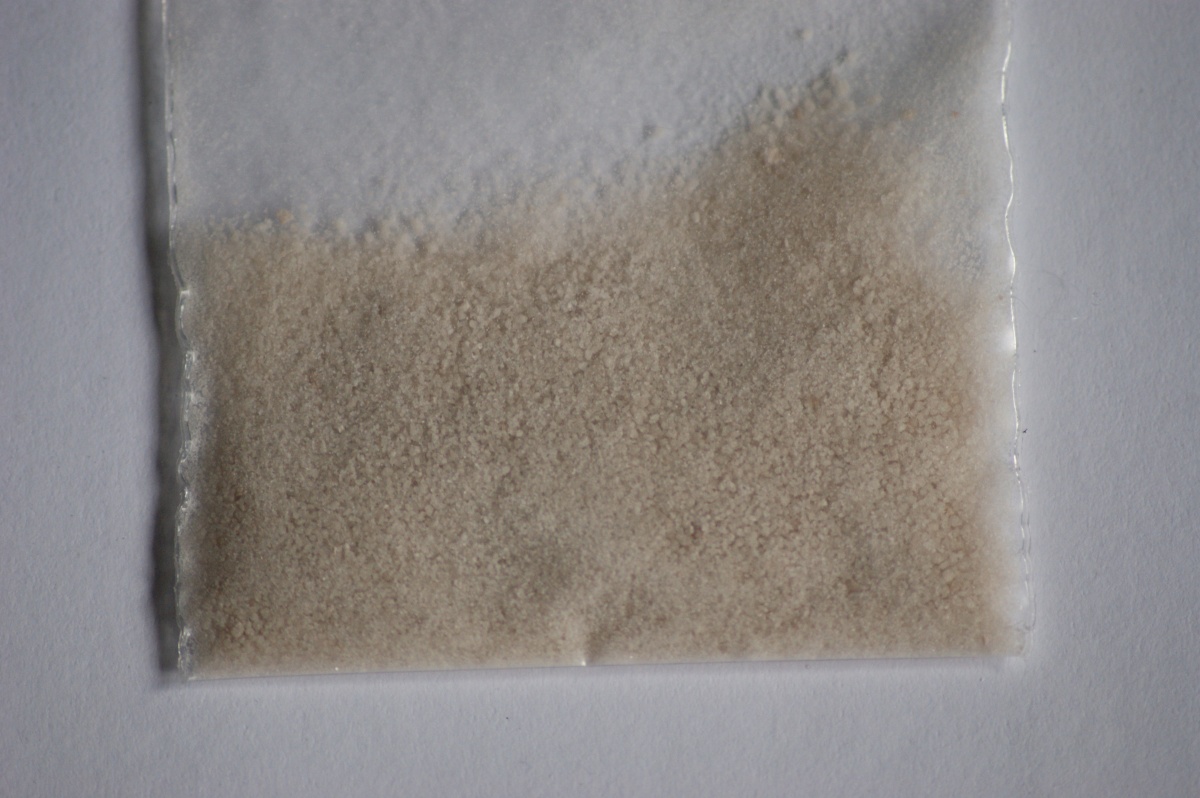

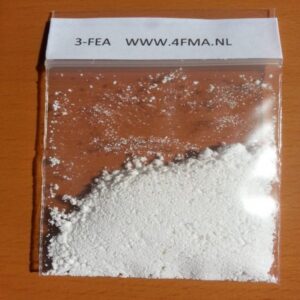
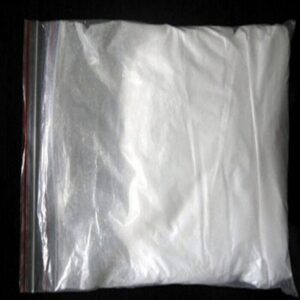
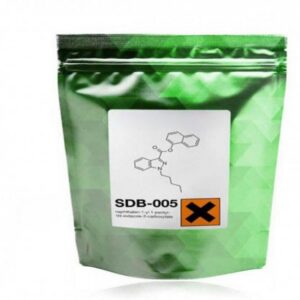
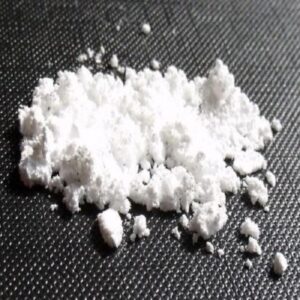
Reviews
There are no reviews yet.